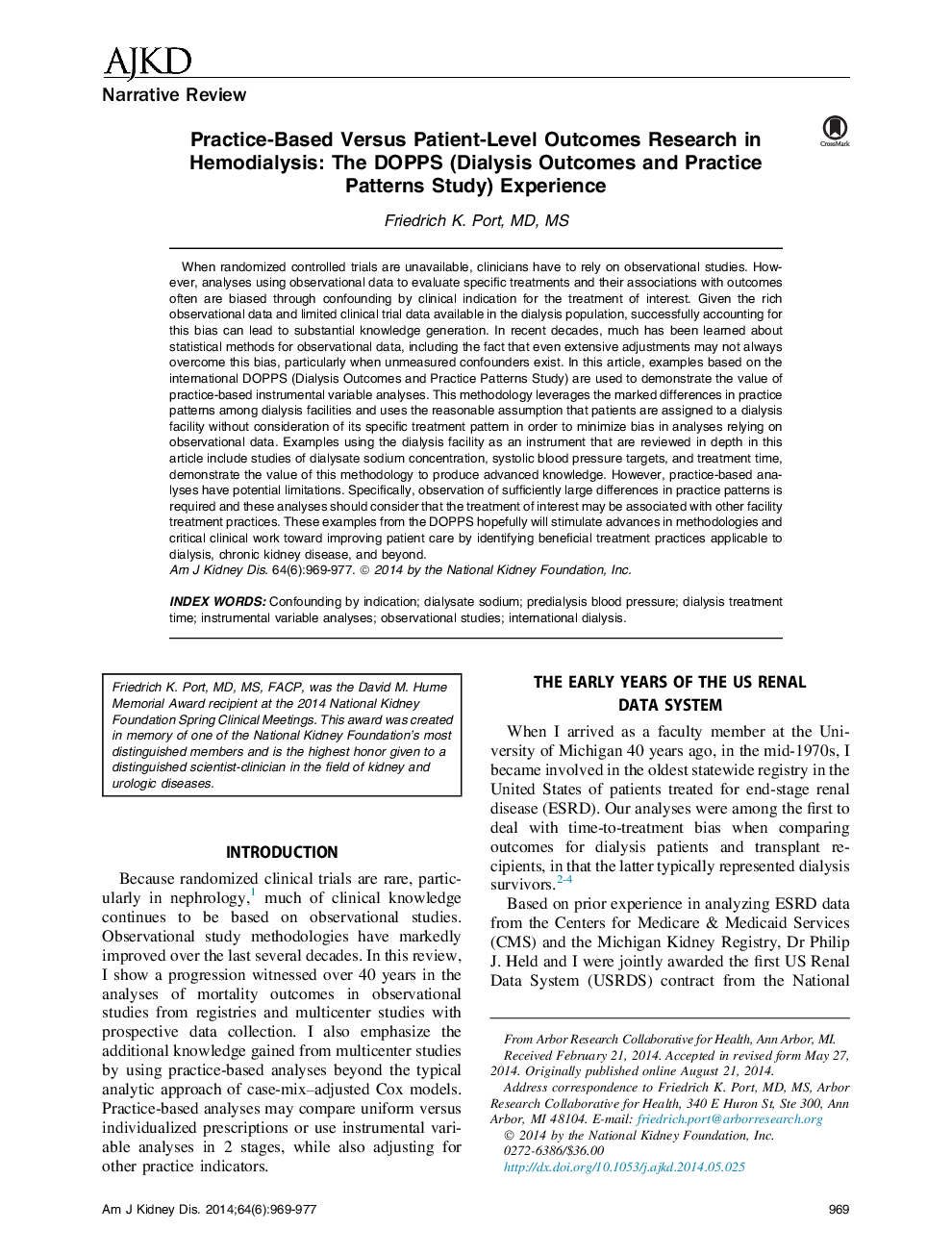| کد مقاله | کد نشریه | سال انتشار | مقاله انگلیسی | نسخه تمام متن |
|---|---|---|---|---|
| 3847701 | 1598261 | 2014 | 9 صفحه PDF | دانلود رایگان |
عنوان انگلیسی مقاله ISI
Practice-Based Versus Patient-Level Outcomes Research in Hemodialysis: The DOPPS (Dialysis Outcomes and Practice Patterns Study) Experience
دانلود مقاله + سفارش ترجمه
دانلود مقاله ISI انگلیسی
رایگان برای ایرانیان
کلمات کلیدی
موضوعات مرتبط
علوم پزشکی و سلامت
پزشکی و دندانپزشکی
بیماریهای کلیوی
پیش نمایش صفحه اول مقاله

چکیده انگلیسی
When randomized controlled trials are unavailable, clinicians have to rely on observational studies. However, analyses using observational data to evaluate specific treatments and their associations with outcomes often are biased through confounding by clinical indication for the treatment of interest. Given the rich observational data and limited clinical trial data available in the dialysis population, successfully accounting for this bias can lead to substantial knowledge generation. In recent decades, much has been learned about statistical methods for observational data, including the fact that even extensive adjustments may not always overcome this bias, particularly when unmeasured confounders exist. In this article, examples based on the international DOPPS (Dialysis Outcomes and Practice Patterns Study) are used to demonstrate the value of practice-based instrumental variable analyses. This methodology leverages the marked differences in practice patterns among dialysis facilities and uses the reasonable assumption that patients are assigned to a dialysis facility without consideration of its specific treatment pattern in order to minimize bias in analyses relying on observational data. Examples using the dialysis facility as an instrument that are reviewed in depth in this article include studies of dialysate sodium concentration, systolic blood pressure targets, and treatment time, demonstrate the value of this methodology to produce advanced knowledge. However, practice-based analyses have potential limitations. Specifically, observation of sufficiently large differences in practice patterns is required and these analyses should consider that the treatment of interest may be associated with other facility treatment practices. These examples from the DOPPS hopefully will stimulate advances in methodologies and critical clinical work toward improving patient care by identifying beneficial treatment practices applicable to dialysis, chronic kidney disease, and beyond.
ناشر
Database: Elsevier - ScienceDirect (ساینس دایرکت)
Journal: American Journal of Kidney Diseases - Volume 64, Issue 6, December 2014, Pages 969-977
Journal: American Journal of Kidney Diseases - Volume 64, Issue 6, December 2014, Pages 969-977
نویسندگان
Friedrich K. MD, MS,